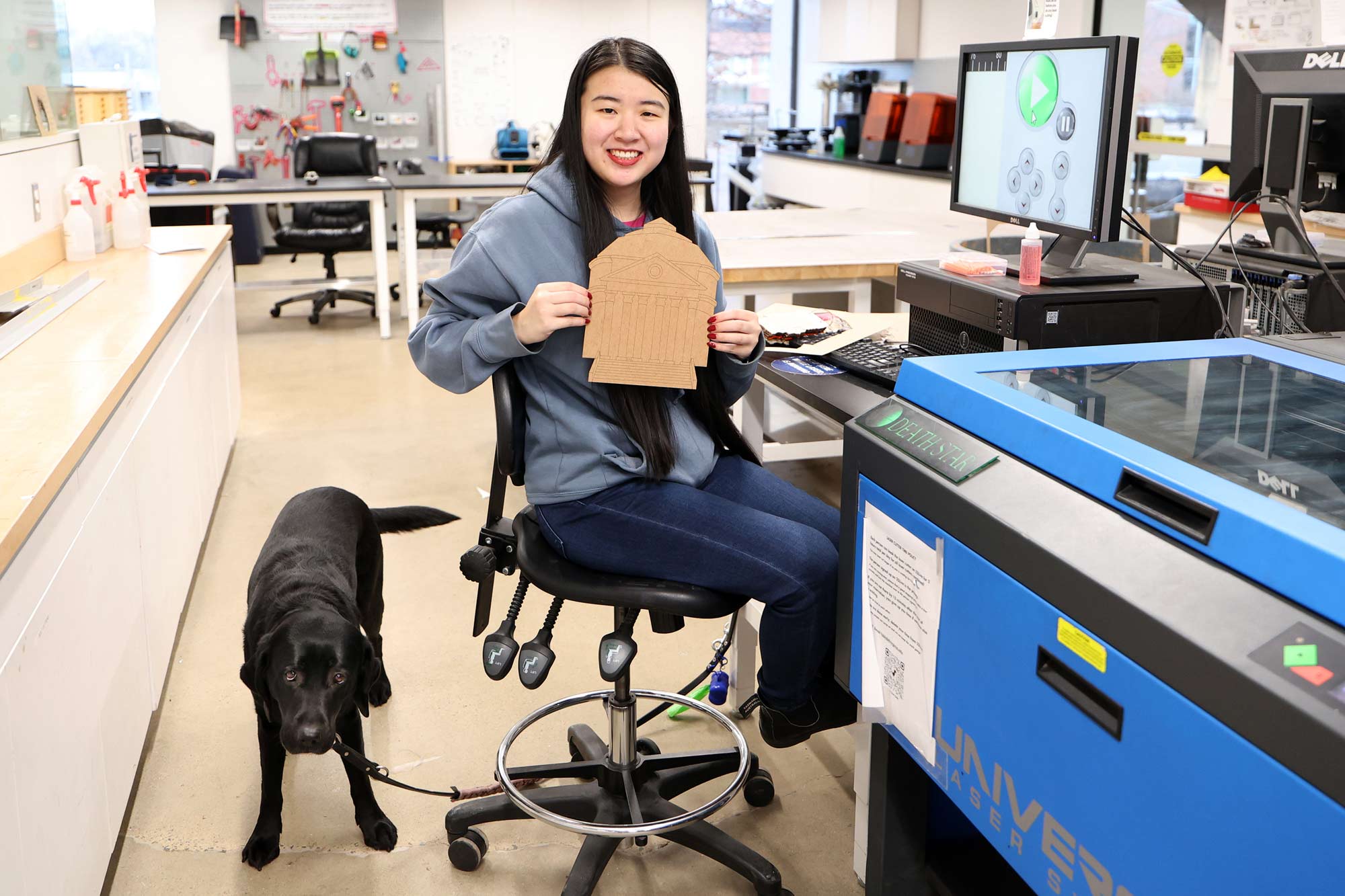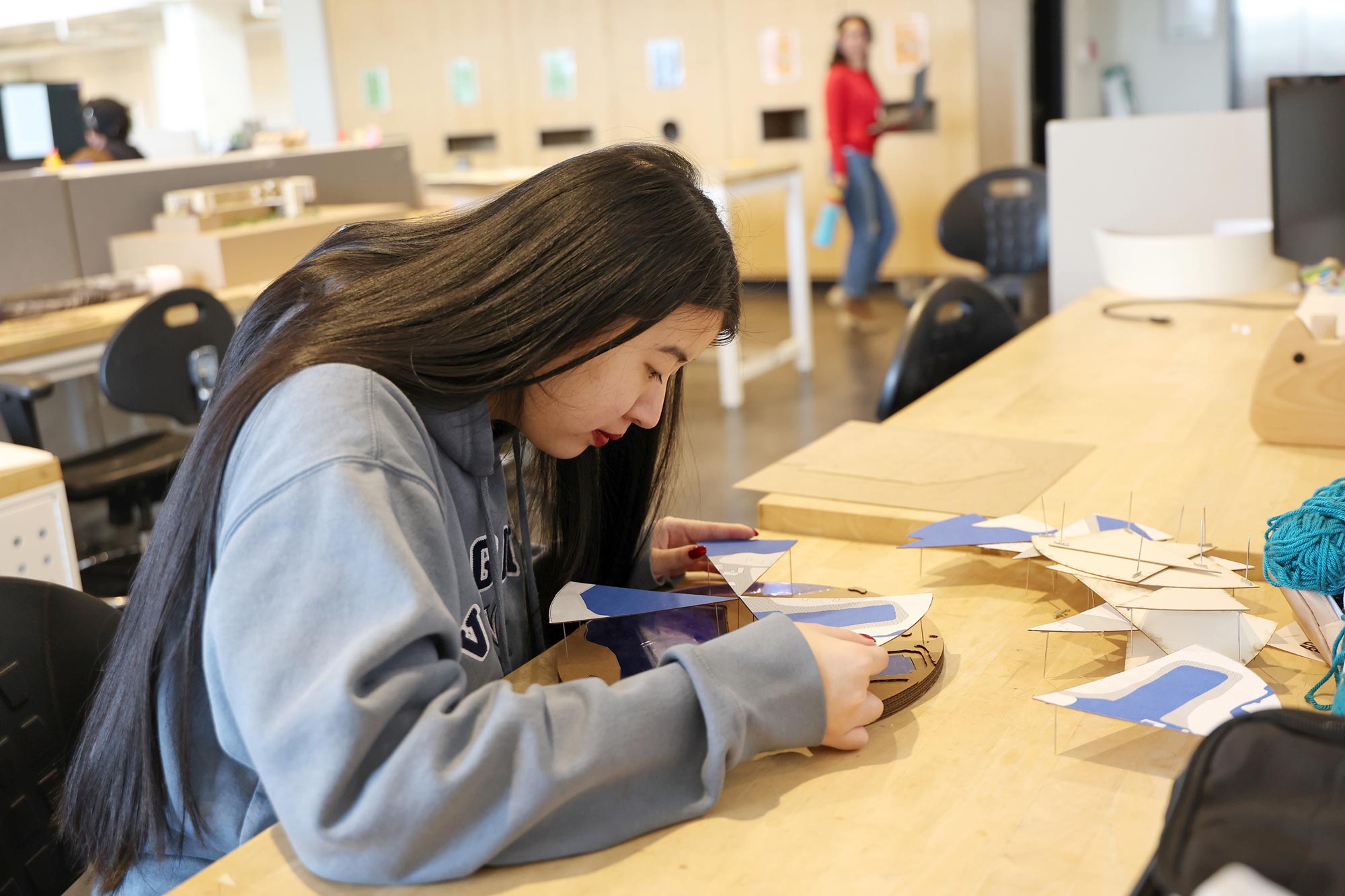Nola Timmins has planned on being an architect since she was at least 8 years old – which may seem like a big dream, considering she is legally blind.
“Ever since I was little, I enjoyed going into people’s houses and drawing their floor plans. When we’d visit my aunt’s and my mom’s friends, I would draw their floor plans, just visualize it, and they would tell me I should be an architect,” said the 23-year-old Timmins while relaxing with her guide dog Brizzy at her feet.
“By the time I was 8 or so, I’d been told that so many times that it was just kind of a fact that I was going to be an architect when I grew up,” she said. “It wasn’t until I was older that maybe I realized I could bring something different to the field.”
Timmins is one of few legally blind architecture students in the country. She is the recipient of the UVA Access Fellowship Fund in Memory of Ronald and Dorie Van Vactor for students who overcame physical hardships and is working toward her master’s degree through the University of Virginia School of Architecture after earning a bachelor’s degree in architecture, with a minor in French, from Georgia Tech.
It’s not an easy task. Timmins has optic nerve atrophy, which greatly limits her vision. She’s had the condition all her life and it cannot be corrected. Glasses don’t improve her sight, although she said people often ask her if she’s tried wearing them.
If only glasses could help: Timmins often sits inches from her computer monitor, a small portion of the software interface blown up to take up the entire screen, requiring her to keep panning across the screen and use hot keys to access software features.
“It takes me two, three maybe four times longer than everybody else, and sometimes I feel like my work isn’t always up to where I’d like it to be because I run out of time,” she said.

Working on a classic design with her guide dog, Brizzy, Timmins says faculty and peers at UVA make her pursuit of a master’s degree fun while challenging. (Photo by Matt Riley, University Communications)
“It’s hard and isolating at times, especially when I was little. At times I’ve had issues in my life with teachers, classmates and friends, with people telling me that I’m ‘inconvenient’ to have in their class, or have as a friend, or that I’m a burden,” she said. “And it was really hard when everyone was learning how to drive and had that freedom.
“But on the flip side, it’s not something I can change, so there’s no point in wishing it was different. That’s just going to waste my time and make me needlessly upset.”
Without some cooperation from professors, administrators and fellow students, the work can be punishing.
“I didn’t enjoy my time at Georgia Tech,” she said. “When I was accepted into a couple of graduate schools, I toured them and UVA stood out. I liked the feeling and the atmosphere. It felt good.
“Communication has been really good at UVA and everybody has been nice and willing to work with me,” she said. “This is the first time since seventh grade that every professor or teacher has been understanding or accommodating.”

Timmins finds ways to manipulate software and trade tools to offset the optic nerve atrophy that greatly diminishes her sight. (Photo by Matt Riley, University Communications)
Timmins enrolled last semester and expects to finish her degree in 2026. Her goal is to help design homes that provide everyone, especially people with disabilities, a comfortable and safe place to live.
“There are designs that could work for everyone. For people who are legally blind, but have light perception, you could include recessed lights around doorways or drawers that can outline or backlight them,” she said. “Rather than doorknobs to run into, maybe push doors, or rounded countertops instead of corners. There are little things that make a difference that you wouldn’t usually think of.”
Building considerations for people with disabilities into homes could also build a sense of pride and belonging, Timmins believes.










